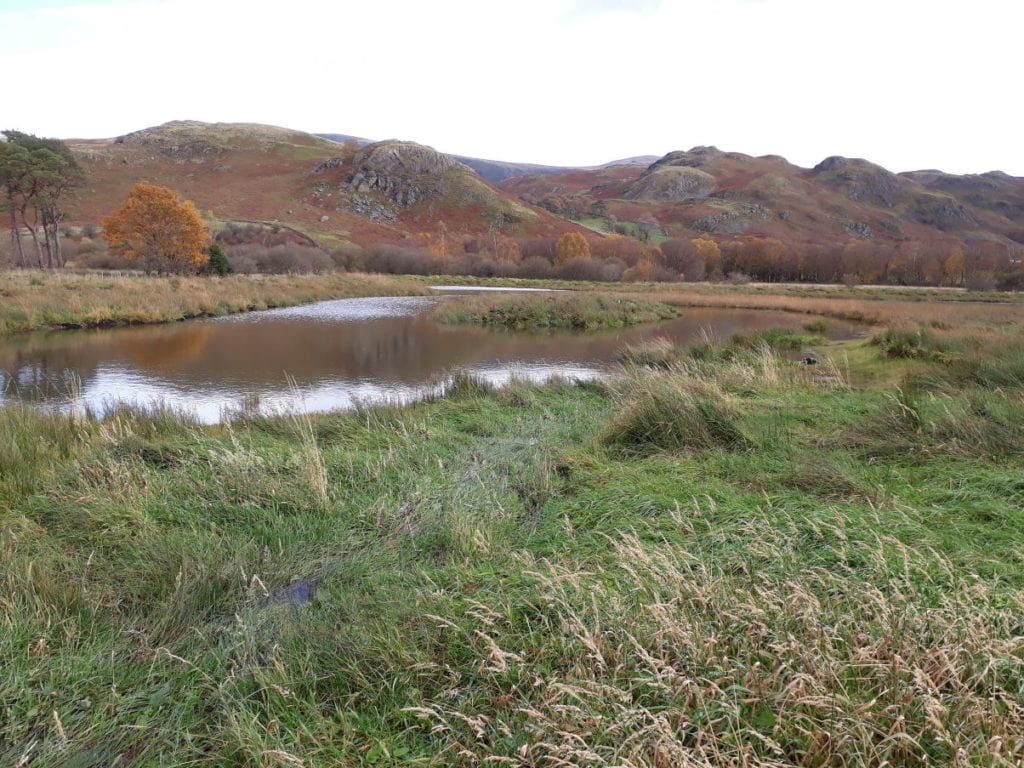
A £735,000 scheme to create a natural flood management project to benefit Keswick is underway.
West Cumbria Rivers Trust is working with farmers and landowners on the three-year catchment restoration project, comprising habitat improvement work and the installation of natural flood management features throughout the River Glenderamackin catchment area from Mungrisdale to Keswick.
Work has now taken place at numerous sites and includes 53 leaky dams, new ponds to permanently hold over eight million litres of water, embankments to temporarily hold back a further 12.6 million litres after storms, improvements to existing ponds and scrapes, 2.8 km of fencing along becks and associated tree planting, and 3.8 km of hedgerow planting and restoration.
All measures are designed to slow the flow of water both within watercourses and the wider landscape to help reduce peak river levels downstream.
One major project in the Naddle area has seen a large pond and embankment created to temporarily store water after storms. The pond holds three million litres of water and the embankment can hold back a further 3.5 to four million litres before gradually draining between storm events.
This project was made possible by a landowner offering 3.7 hectares of unproductive agricultural land which sits just above the Naddle floodplain.
As well as contributing to natural flood management efforts, the pond has significantly increased biodiversity in the area.
It features a large island for nesting birds and clean gravels to provide nesting habitat for lapwing and oystercatchers.
The area has been seeded with wildflowers which have attracted bees and other pollinating insects. Red deer stag, roe deer, fox, brown hare, toads, dragon flies and damsel flies have also all been spotted.
Clair Payne, project officer at West Cumbria Rivers Trust, said: “The water storage area at the Naddle is a really exciting example of a project aiming to help both communities downstream and wildlife.
“In the right place, storing a large volume of water after storms will contribute to efforts to reduce peak levels downstream which cause flooding. Meanwhile, the site is looking fantastic and is attracting a wide range of species.
“Natural flood management is about lots of small measures across a whole water catchment area adding up to make a difference to flows downstream.
“What’s great is that many of the features being installed have additional benefits. For example, trees on riverbanks shade the water and keep it cool for fish, while hedgerows link habitats together and provide shelter for livestock.
“And beyond natural flood management we’re taking an even wider view, restoring rivers and habitats too to provide even greater environmental improvements.”
“I want to say thank you to all the farmers and landowners in the River Glenderamackin area for their support and enthusiasm. The project wouldn’t be possible without them.”
The trust is also working with farmers on improving soil condition.
Soil becomes compacted over the long term and is then less able to absorb rainwater, increasing surface run-off.
The trust has bought a sward lifter and a soil aerator that farmers can borrow to break up the top layers of soil.
Work will continue into next year, with plans including extensive tree and hedgerow planting, further fencing off of riverbanks, new ponds on a similar scale to those built this year, and additional leaky dams.
The trust is working with Lancaster University to monitor the effectiveness of natural flood management features installed as part of the project to contribute to the national evidence base on natural flood management.
Anna Hetterley, natural flood management advisor at the Environment Agency, said: “The commitment of multiple agencies and landowners to work together and explore nature based solutions as a way to slow the flow of flood water is a powerful component of Cumbria’s response to the Climate Emergency.
“There has already been some fantastic work delivered in partnership across the River Glenderamackin catchment using natural flood risk management techniques and it’s great to see this project coming to life.
“Our work in the Naddle not only helps us to meet the ambitions set out in our Flood and Coastal Erosion Risk Management Strategy but will help us to create a better place for the local community and local wildlife. We look forward to seeing the benefits this project will bring.”
The project is funded by DEFRA/the Environment Agency and the Water Environment Grant scheme through the European Agricultural Fund for Rural Development. West Cumbria Rivers Trust is working with partners including the Environment Agency, Cumbria County Council, Natural England, the National Trust, United Utilities, the Woodland Trust, Farmer Network, Cumbria Wildlife Trust, Friends of the Lake District, Derwent Owners Association, Cumbria Woodlands and local community groups.
Last week, West Cumbria Rivers Trust was awarded £380,000 through DEFRA’s new Green Recovery Challenge Fund to continue their work in the Glenderamackin and Cocker catchments.
The trust will use this funding to plant nine hectares of woodland, 3.4 km of hedgerows, and 400 in-field trees to slow the flow and keep rivers cool.
Work will also include creating new ponds and wetland areas, installing 180 woody debris features, continuing with invasive species control and fish survey work, and delivering a programme of seasonal events for communities, schools and volunteers.








